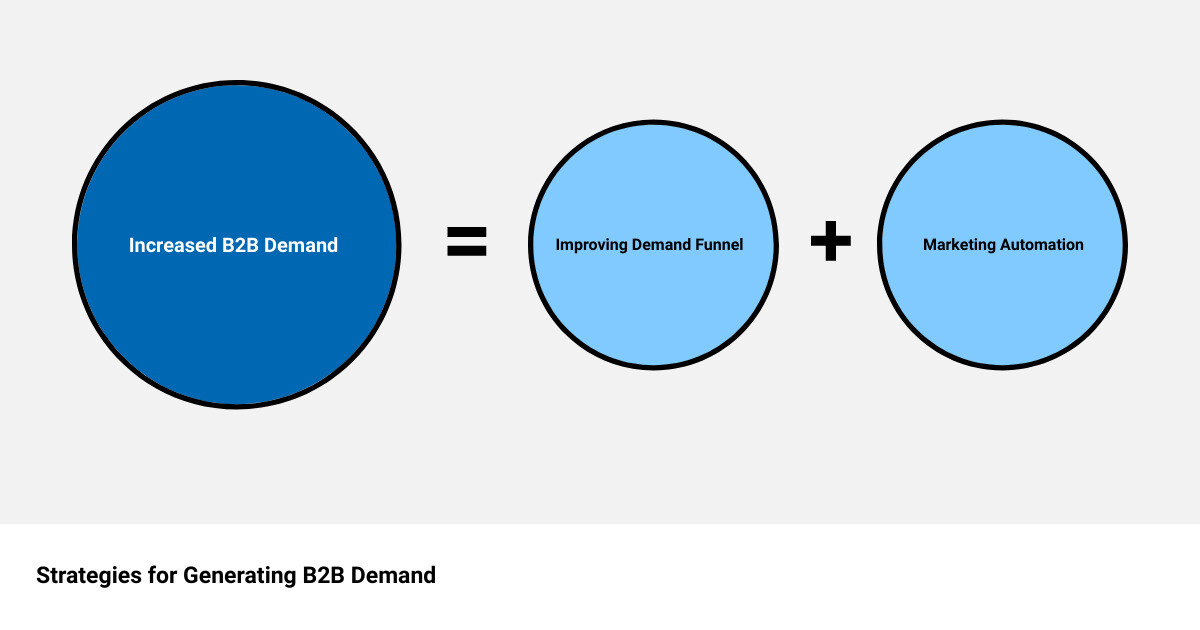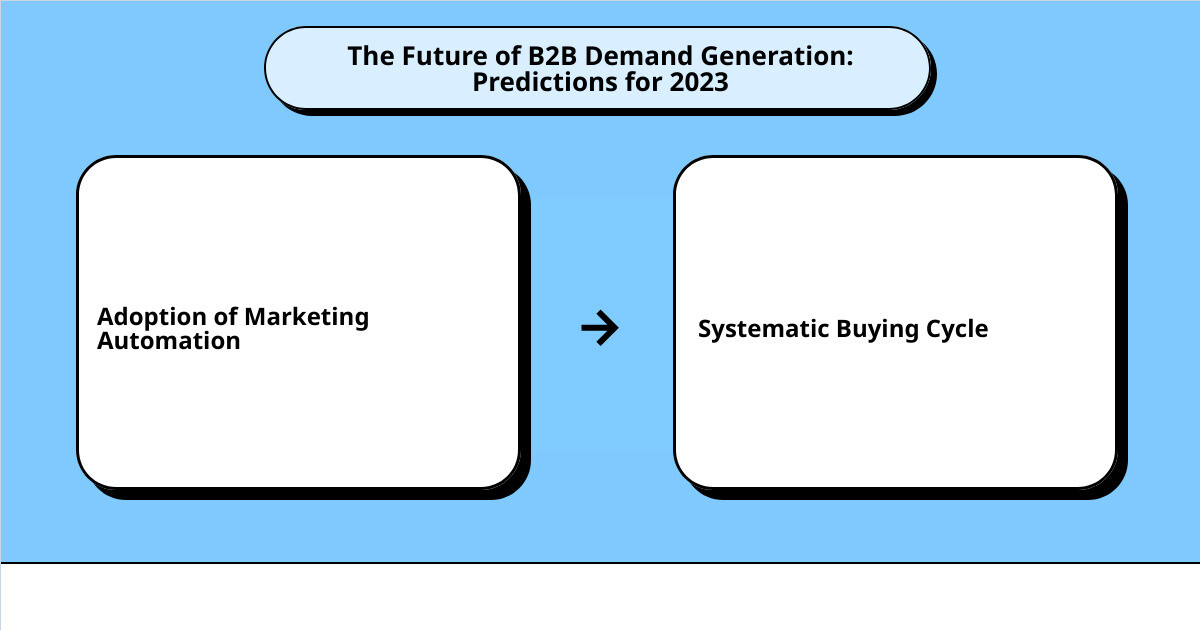Introduction: Understanding B2B Demand Generation Strategy
Breaking through the cluttered market of HR technology or workforce technology can feel like trying to find a needle in a haystack. You know your solution offers significant value, but how do you get your message heard by those who need it most? Enter the world of B2B demand generation strategy – a powerful tool that can catapult your business growth and help you stand out in a crowded field.
B2B demand generation is a comprehensive approach that involves creating awareness and interest in your company’s offerings. It’s about not just attracting potential customers, but educating them about their problem and your solution, nurturing them until they are ready to buy. This strategy is crucial for companies looking to increase their digital footprint, build brand credibility, and ultimately drive high growth.
However, crafting an effective B2B demand generation strategy isn’t as simple as tossing a few keywords into a blog post or sending out a mass email. It requires a deep understanding of your business’ positioning, your audience, a killer content strategy, a well-thought-out channel strategy, and effective conversion optimization.
But don’t worry, this journey doesn’t have to be overwhelming. Through this guide, we’ll uncover the untapped secrets to unleash your B2B demand generation strategy, helping you build a strong foundation for business growth. So let’s dive right in.
The Core Components of Demand Generation
Unleashing the true potential of your B2B demand generation strategy revolves around two core components: Demand Creation and Demand Capture. These two stages work hand in hand to ensure a streamlined flow from building awareness to converting potential buyers into actual customers.
Demand Creation: Generating Awareness
The first step in any effective demand generation strategy is creating awareness. It is about reaching out to your entire addressable market, not just those who are actively looking for solutions. 95% of your market might not even be aware that they need a solution, hence, underlining the importance of creating demand.
Creating demand focuses on two elements:
- Creating awareness of the problem: The goal at this stage is to distribute value-driven, informative content that educates your potential buyers about a better way of doing things. This could be achieved by sharing content in non-intent channels, places where your ideal customer hangs out but isn’t necessarily looking for a solution, such as social media.
- Creating demand for the solution: This stage is about helping your buyer understand how to solve their problem. It’s important not to overwhelm them with product specifications and features, but to provide unbiased, free advice in the form of content marketing. The aim is to build affinity and establish your brand as a go-to place for advice on your topic. Remember, different buyers consume content differently, so understanding what resonates best with them is crucial.
Demand Capture: Converting Buyers
Once you’ve successfully created demand and awareness, the next step is to capture that demand. This stage focuses on marketing to the 5% of your market that is actively looking for a solution.
Demand capture involves two key processes:
- Capture demand channels: This implies optimizing your visibility in channels where buyers are actively seeking solutions. These channels could include Google searches using buyer-intent keywords or review sites. Your role is to ensure that your business is visible within these channels to drive as much high-intent demand as possible to your website.
- Capture demand process: The process of capturing demand doesn’t end when a potential buyer clicks on your website. It also includes converting this high-intent traffic into qualified leads through consultation requests, demo requests, or contact forms.
Understanding and executing these core components of demand generation can create a robust foundation for your B2B demand generation strategy. In the following sections, we’ll delve deeper into the strategies for generating B2B demand and how GrowthMode Marketing can help you achieve your business goals.
Key Performance Indicators for Measuring Demand Generation Success
As the saying goes, “what gets measured gets managed”. This rings true for B2B demand generation as well. To truly understand the impact of your demand gen efforts and optimize them for better results, it’s crucial to set and track crucial key performance indicators (KPIs).
Closed Sales and Conversion Rates
The ultimate measure of your demand generation strategy’s success is the number of closed sales. It gives you a clear picture of how effectively your efforts are converting into tangible business outcomes. Alongside, monitoring conversion rates – the percentage of your audience that moves from one stage of your funnel to the next – can provide valuable insights into the effectiveness of your demand gen tactics at each stage of the buyer’s journey.
Cost Per Acquisition and Cost Per Lead
Cost per acquisition (CPA) and cost per lead (CPL) are financial metrics that reveal the economic efficiency of your demand generation activities. CPA tells you how much you’re spending to acquire a new customer, while CPL helps you understand the cost involved in generating a new lead. Monitoring these metrics can help you optimize your marketing spend and ensure you’re getting the best bang for your buck.
Volume of Qualified Leads, Average Deal Value, and Customer Lifetime Value
The volume of qualified leads is a direct indicator of the success of your demand generation efforts in attracting the right audience. A healthy pipeline of qualified leads is a promising sign of an effective demand gen strategy.
Similarly, the average deal value – the average revenue generated per closed deal – can give you insights into the quality of leads you’re attracting. Lastly, the customer lifetime value (CLV) – the total revenue you expect to earn from a customer over their lifetime – can help assess the long-term value and impact of your demand generation efforts.
Remember, measuring the success of your campaigns is only a half-step. The real magic happens when you use these insights to optimize your campaigns, identify what’s working and what’s not, and make necessary adjustments. Whether it’s tweaking your messaging based on audience response or discovering an untapped audience, these KPIs can provide valuable insights to drive your demand generation strategy forward.
With the right KPIs in place and the disciplined tracking of these metrics, you can ensure that your B2B demand generation strategy is not only generating demand but also driving growth for your business.
Strategies for Generating B2B Demand
Unleashing the power of your B2B demand generation strategy requires a toolbox filled with innovative approaches to capture and engage your ideal customers. Let’s dive into the strategic arsenal.
Improving the Demand Funnel Framework
The demand funnel is a pivotal part of your B2B demand generation strategy. This framework should be dynamic, adapting to the changing behaviors of potential buyers. It’s not enough to have a customer land on your website; you need to actively guide them through their purchasing journey, assisting them at each stage with targeted content and marketing tactics.
Integrating CRM and Marketing Automation
Customer Relationship Management (CRM) systems and marketing automation can work together like a well-oiled machine. CRM data provides insights into your leads’ specific needs, allowing you to personalize campaigns. Meanwhile, marketing automation can help distribute the right content to the right leads at the right time, significantly improving lead nurturing and conversion rates.
Optimizing Lead Nurturing and Refining Lead Scoring
Lead nurturing shouldn’t end after a potential customer visits your website. Your marketing team should assist your sales team throughout, creating content that answers customer queries, helping to move leads along the sales pipeline more efficiently. At the same time, refining your lead scoring by considering factors like social media engagement, email interactions, and website analytics can help you better qualify leads and tailor your B2B demand generation tactics.
Using Account-Based Marketing and Developing a Content Strategy
Account-Based Marketing (ABM) allows you to personalize campaigns based on each account’s specific needs. Pairing ABM with a robust content strategy can help you cater to leads at various stages of the buying journey. Prioritize content based on lead score, and create diverse content that answers commonly asked questions and generates interest in your product or service.
Leveraging Social Media and Enhancing Email Marketing Efforts
In the B2B world, social media is more than a networking tool; it’s a powerful lead generation platform. By refining your social media strategy, you can improve your demand generation tactics. Responding with personalized content to those engaging with you on social media can help create demand for your products or services.
Likewise, optimizing your email marketing efforts can play a crucial role in your demand generation strategy. Consider automating opt-in emails and follow-ups, and creating engaging content such as white papers and infographics to send to highly interested leads.
Building Authority with Event Marketing and Utilizing Performance TV Advertising
Events like trade shows and webinars, as well as special events for your best customers, can serve as platforms to demonstrate the need for your product or service. Meanwhile, Performance TV Advertising can significantly enhance your reach and establish your brand as a trusted authority in your industry.
Each of these strategies is a cog in the wheel of your B2B demand generation machine. By finely tuning each, you can ensure that your strategy drives not just demand, but business growth as well.
The Role of GrowthMode Marketing in B2B Demand Generation
In the crowded realm of B2B marketing, it’s essential to choose a partner that not only understands the intricacies of demand generation but specializes in it. This is where GrowthMode Marketing comes into play. By closing the gap between sales and marketing, the company leverages its specialization in building brand awareness and trust to help HR technology companies break through the clutter and achieve high growth.
Specialization in Demand Generation
One of the distinguishing factors of GrowthMode Marketing is its specialization in demand generation. This means they don’t just understand the theory, they have the hands-on experience to implement a strategic, multi-step demand generation process. From identifying and understanding your target audience to creating and distributing valuable, targeted content, GrowthMode Marketing has the expertise to engage your prospects effectively. The final part of their strategy is leveraging lead nurturing strategies to convert engaged prospects into customers. This specialized approach ensures a steady inflow of marketing-qualified leads, paving the way for sustainable business growth.
Bridging the Gap Between Marketing and Sales
Another strength of GrowthMode Marketing lies in their ability to bridge the gap between sales and marketing. They understand that disjointed strategies lead to missed opportunities, hence they foster a strong alignment between these two teams. This guarantees a cohesive strategy that targets the right audience and effectively moves leads through the sales funnel. By integrating CRM data with marketing automation, they ensure consistent engagement with potential customers, guiding them from the exploratory phase right through to conversion.
Helping HR Technology Companies Break Through the Clutter
For HR technology companies grappling with a cluttered market, GrowthMode Marketing offers a lifeline. They understand the unique challenges these companies face in building their digital footprint and getting in front of their ideal customer profile audience. By utilizing their demand generation expertise, they build brand awareness, credibility, and trust. This not only helps these businesses to stand out in the crowded marketplace but also drives high growth by stimulating demand and guiding potential customers through the buying process.
In a nutshell, GrowthMode Marketing’s role in B2B demand generation is to help businesses break through the clutter, reach their target audience, and drive business growth. Their specialization in demand generation, coupled with their ability to bridge the gap between marketing and sales, makes them an ideal partner for HR technology companies seeking to unleash their B2B demand generation strategy.
The Future of B2B Demand Generation: Predictions for 2023
As we propel forward into an increasingly digital age, the landscape of B2B demand generation is set to evolve in exciting new directions. The future will bring with it innovative tools, strategies, and techniques that will reshape how businesses approach demand generation. Here are two key predictions for 2023 that businesses must be prepared for to stay ahead of the curve in the evolving realm of B2B demand generation.
The Adoption of Marketing Automation
Automation is no longer a luxury but a necessity in the digital marketing world. As we move into 2023, the adoption of marketing automation will be a top priority for B2B marketers looking to boost their demand generation efforts.
Marketing automation tools streamline, automate, and measure marketing tasks and workflows, increasing operational efficiency and growing revenue faster. They allow businesses to automate repetitive tasks, such as email marketing and social media posting, freeing up valuable time for marketers to focus on more strategic aspects of demand generation.
But it’s not just about improving efficiency. Marketing automation also facilitates a more personalized and targeted approach to demand generation. It enables businesses to segment their audience, tailor their messaging, and deliver the right content at the right time, enhancing the overall customer experience and fostering more meaningful relationships with potential buyers.
The widespread adoption of marketing automation in 2023 will revolutionize how businesses approach demand generation, ultimately leading to better leads, higher conversions, and increased sales.
Facilitating a Systematic Buying Cycle with Team Alignment
The future of B2B demand generation will also see a greater emphasis on facilitating a systematic buying cycle with team alignment. This means ensuring that all teams involved in the buying cycle, from marketing to sales to customer service, are aligned and working towards the same goals.
A systematic and aligned approach to the buying cycle can significantly enhance the effectiveness of demand generation efforts. It ensures that potential buyers receive consistent messaging and experiences throughout their journey, from the awareness stage right through to the decision stage.
By aligning their teams and facilitating a systematic buying cycle, businesses can ensure that they are capturing and nurturing leads effectively, and converting them into customers more efficiently.
Gearing up for the future of B2B demand generation involves proactive planning and strategic thinking. As we approach 2023, businesses that adopt marketing automation and focus on aligning their teams for a systematic buying cycle stand to gain a competitive edge in their demand generation efforts. Businesses that partner with a company like GrowthMode Marketing, which understands these future trends, can navigate the evolving B2B landscape with confidence and achieve their growth goals.
Conclusion: Unleashing Your B2B Demand Generation Strategy
As the sun sets on our exploration of the B2B demand generation strategy, it’s clear that this is not a static field. It is ever-evolving, driven by advances in technology and shifts in market dynamics. For forward-thinking companies, this means continuously refining their strategy, staying abreast of the latest trends, and leveraging the best tools available.
The first step in unleashing your B2B demand generation strategy is understanding your business positioning, deciphering your audience, and developing a robust content and channel strategy. You need to optimize conversions, ensuring your potential buyers can effectively evaluate your solution and answer critical purchase questions. And let’s not forget the importance of leveraging the power of tools like HubSpot to streamline this process.
When executed effectively, a well-crafted demand generation strategy can yield significant results. These include increased website traffic, a larger volume of qualified leads, and improved lead quality. However, the process doesn’t stop at strategy execution. It’s important to measure and analyze your results continually, using these insights to refine your strategy and improve outcomes.
The good news is, you don’t have to navigate this complex landscape alone. Partnering with a specialized agency like GrowthMode Marketing can help you bridge the gap between marketing and sales, break through the clutter in the HR technology market, and set your business on a path to high growth.
As we look to the future of B2B demand generation, the importance of adopting marketing automation and facilitating team alignment cannot be overstated. Embracing these trends will enable businesses to create a systematic buying cycle that drives revenue growth.
In conclusion, the untapped secrets to unleash your B2B demand generation strategy lie in a deep understanding of your business, your audience, and the tools at your disposal. It requires a commitment to continuous learning, measurement, and improvement. And above all, it requires a strategic approach that aligns with your business goals and resonates with your target audience. It’s time to embrace the future of B2B demand generation and unleash the full potential of your strategy.





